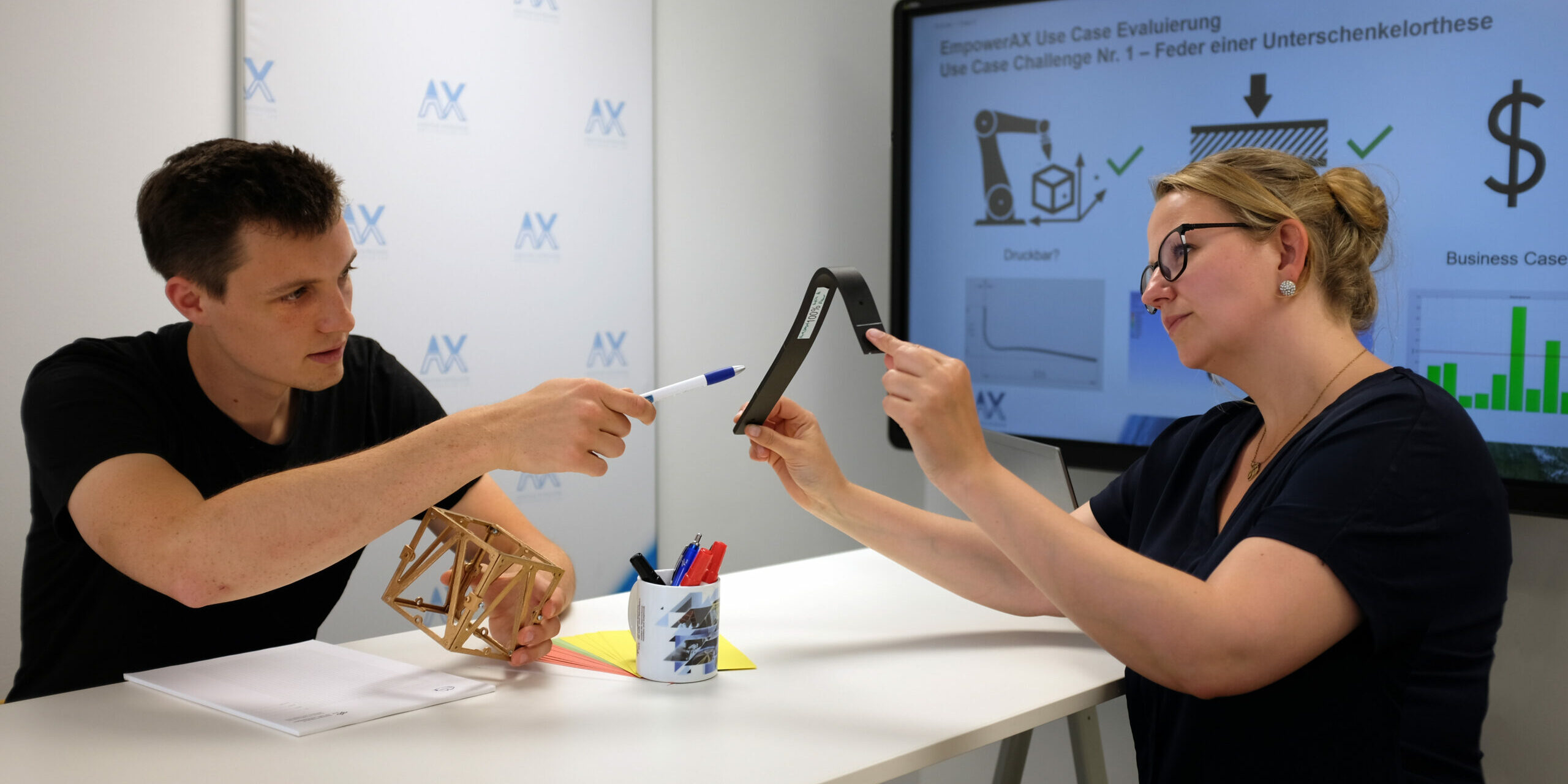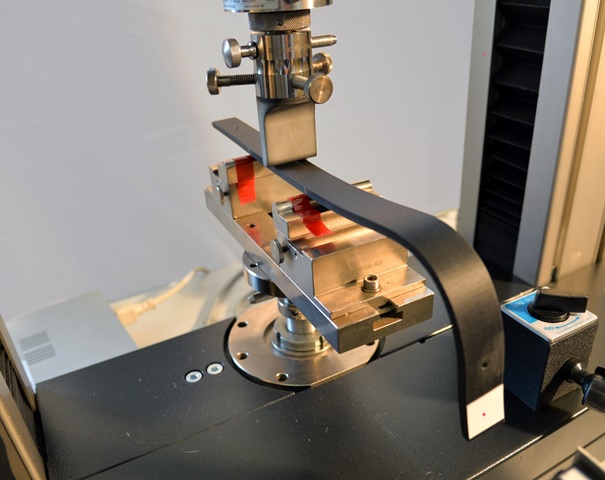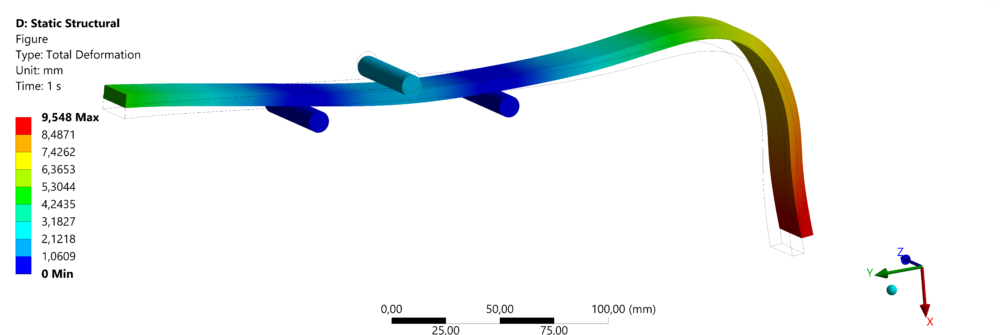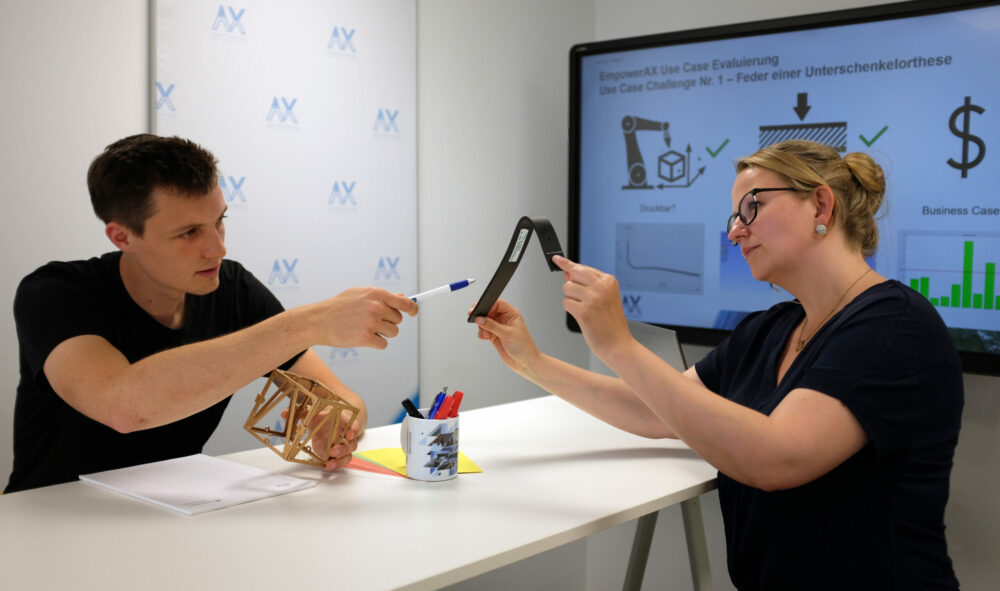Light as plastic, but as resilient as metal – and customisable to boot. These are requirements that are placed on components in a wide range of industries from aerospace to medical technology. But how can the weight of a satellite structure for space be reduced while maintaining the same load capacity? And how can highly stressed orthoses be manufactured individually with low time and cost expenditure? These questions highlight problems for which the use of continuous fibre-reinforced materials by means of additive extrusion, a form of 3D printing, can offer solutions. The still young technology finds its ideal place of application where components with a high load-bearing capacity and a high need for customisation require a lower weight at the same time. With fibre-reinforced 3D printing, these three requirements can be combined in one component. But in which applications are these requirements necessary in combination and how can the technology be used industrially there? At this point, potential users need quick answers to the most important questions about possible applications, resilience and costs. The team behind EmpowerAX works out the answers EmpowerAX to these questions with a mixture of curiosity, openness and structured methods in their various Use Case Challenges.
“And what can you use this for?” EmpowerAX Use Case Challenges provide answers
The Use Case Challenge is a tool developed in EmpowerAX that serves to evaluate the suitability of potential use cases for manufacturing using additive extrusion technologies with continuous fibre reinforced materials. The starting point for a quick assessment of suitability are the “three golden questions” for use case evaluation developed by the EmpowerAX team.
Is the component printable? Will it permanently withstand the required loads? Does the use case make economic sense (use case vs. business case)?
If the team considers the use case to be suitable based on the answers to these three questions, the next step is to involve the suppliers of additive extrusion technologies for fibre-reinforced 3D printing from EmpowerAX. The use case and the requirements for the component are presented to them, followed by printing of the component by various technology providers and testing of these with regard to required properties, such as stiffness, in the DLR test laboratories. We then openly discuss the results with all parties involved. For problems that arise during this process, we look for quick solutions together. Some of the problems can already be solved by simple adjustments in the component design.
– Execution (right) and simulation (left) and of a 3-point bending test to validate the material parameters used in the simulation (source: DLR / FH Münster).
An application from medical technology – The spring of a lower leg orthosis
In aerospace, the topics of weight reduction, resilience and efficient use of the available space are relevant. These aspects are equally important for external aids on the highly individual human body. For people who are limited in their mobility, medical technology offers various approaches to promote mobility. From exoskeletons to prostheses and orthoses, the requirements are clearly defined – functionality and wearing comfort for the wearer as well as adaptability to the wearer are relevant here. The conventional manufacturing process of the spring by hand lay-up with pre-impregnated fibre composite layers requires a high cost and time expenditure. 3D printing offers the possibility to change this circumstance, but functional elements made purely of plastic do not achieve the desired stiffness. By using continuous fibre-reinforced material, there is the potential to specifically adapt the material properties.
Prof. David Hochmann and Carsten Dilthey (B.Sc.), researchers from the Laboratory for Biomechatronics at Münster University of Applied Sciences, are dealing with this problem as part of a research project and have envisaged the use of continuous fibre-reinforced materials in combination with 3D printing to manufacture the spring as a solution option for time, cost and stiffness issues. With this in mind, they approached the EmpowerAX team. Together, in a collaborative process of experience and methods, we checked whether the technology was suitable for manufacturing the spring and first made a comparison of conventionally available additive materials. This was the birth of the first EmpowerAX Use Case Challenge.
Based on the results of the Use Case Challenge, additional conclusions could be drawn for optimising the design and layout of the spring. In addition to the questions about feasibility, the EmpowerAX team and the researchers at Münster University of Applied Sciences are also currently investigating questions about the simulative mapping of an orthosis test stand. The EmpowerAX team is currently transferring this procedure to the evaluation of further potential use cases from a wide range of industries and areas of application.










